Veneers in Mexico City
Search and Compare the Best Clinics and Doctors at the Lowest Prices for Veneers in Mexico City

Find the best clinics for Veneers in Mexico City
With Medijump you can browse 2 facilities offering Veneers procedures in Mexico City. The cheapest price available is $28 in Tijuana
Veneers in Mexico
Price: $ 28
Veneers in Tijuana
Price: $ 28
Veneers in Mexicali
Price: $ 89
Vietnam offers the best prices Worldwide
Price: $ 1
From 127 verified reviews
Guillermo Diaz, 13 September 2020
Great friendly place where you leave smiling from ear to ear!
From 3 verified reviews
Samuel J. Smith, 03 January 2020
Flew in from FL, well worth the trip. Saved a bunch too!
Compare Before & After Photos of _procedure_photos.phpVeneers
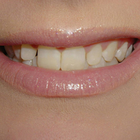

Front view
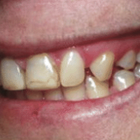
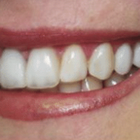
Half-side view
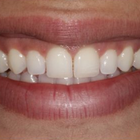
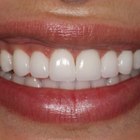
Front view
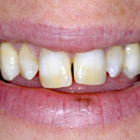
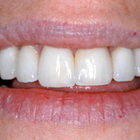
Front view
WHY US?
At Medijump, we're making medical easy. You can search, compare, discuss, and book your medical all in one place. We open the door to the best medical providers worldwide, saving you time and energy along the way, and it's all for FREE, no hidden fees, and no price markups guaranteed. So what are you waiting for?

Free

Best Price

Widest Selection

Risk-Free
What you need to know about Veneers in Mexico City

Dental veneers are thin covers that are attached to the surface of teeth to enhance their appearance. The non-invasive dentral procedure is previously popular among those with damaged or discolored teeth. Nowadays, however, the procedure is seen as the ideal method of achieving the ‘perfect smile.'
Veneers can be used to hide uneven, misaligned or simply imperfect teeth. The veneers are cemented over the existing teeth and fixed into place – there are two main types of veneer; Porcelain and Composite. Porcelain veneers are more expensive and appear more natural, being made in a laboratory so require multiple visits. There is often the need to alter the existing teeth, removing some of the mass. Composite veneers are made of the same materials used for cavity fillings. They can usually be made quickly, and are sculpted directly on the teeth instead of in a laboratory. Thus allowing the procedure to be done in a day.
What does a Veneers Procedure Involve?
Veneers are used primarily for aesthetics. This type of treatment procedure is perfect for people who have gaps in their teeth, stains, as well as people who may have chipped a tooth. Veneers are custom-made shells designed to fit the shape of your teeth and to be attached to your front teeth to improve the size, shape, color, and length.
Two main types of veneers are:
- Composite Veneer - this type can be created by your dentist on the same day and directly applied to your teeth. You will only need a single appointment to complete the procedure.
- Porcelain Veneer - this type is manufactured in a laboratory. Opting for a porcelain veneer will require you to have two appointments. First, is to prepare your teeth (enamel removal) and mold a model of your teeth to be created in the lab. The second is to finally cement your veneers onto your teeth.
The most commonly used type of Veneer is the Porcelain Veneer as it appears more natural and can resist stains better than composite veneers. Besides the two main types of veneers, some dentists may also offer no-prep veneers. These may include specific brands of procelain veneers like Vivaneers and Lumineers. They are less invasive to apply since the layers of tooth under the enamel aren't removed.
In terms of anesthetics, local anesthesia is not usually required while undergoing the whole procedure. However, depending on how you handle pain and discomfort, you may request to receive local anesthesia or sedation.
Aside from giving you a pleasing smile, veneers are resistant to staining and offer the best fix to broken or damaged teeth.
How Long Should I Stay in Mexico City for a Veneers Procedure?
This type of procedure is an outpatient treatment, meaning you may be able to go home after undergoing the procedure. However, you will be required to do a follow-up check-up with your dentist to assess the placement of your veneers and in most cases, the procedure has to be carried out over 2 separate occasions, just a day or two apart. Since this is a non-invasive treatment, stitches are not required, but you will be required to stay in Mexico City for at least a few days.
What's the Recovery Time for Veneers Procedures in Mexico City?
There is actually no recovery time after the placement of your veneers. You can also return back to your daily routines including exercise immediately after your trip. As for the enamel removal, you may experience some mild discomfort for about a week. It is best that you avoid very hot or cold foods, including hard, chewy or crunchy food. When your sensitivity wears off, you can return to your normal dietary habits.
What sort of Aftercare is Required for Veneers Procedures in Mexico City?
Once your dental veneers have been placed and you have completed the whole procedure, you should commit yourself to good oral hygiene, regular visits to your dentist and a good healthy lifestyle. Dental Veneers can last beyond 10 years now, however, just like your natural teeth, veneers are also still susceptible to damage. This is why aftercare is very important to help with the longevity of your new teeth.
What's the Success Rate of Veneers Procedures in Mexico City?
Over the past years, many studies have reported that over 91% of people who have had dental veneers experienced highly positive results. However, potential risks and side effects after undergoing this procedure are a possibility. Just like any other dental restoration, dental veneers can have some side-effects, for example:
- Tooth sensitivity - since this procedure will require the removal of some enamel, your teeth will become slightly sensitive, following the placement of your veneers.
- Response from gum tissues - your gum tissue might take some time to adjust to your newly placed veneers. Expect to have some minor inflammation and/or discomfort in your gums.
- Risk of trauma - once your teeth’s enamel is removed, it will become more sensitive, thus it will be even possible for the pulp within your teeth to die.
- Possible Issues with placement - it's possible for your teeth to have issues with decay or chipping along the outer portion of your veneers. Gum irritation may also be possible. Other problems may include rough-edged veneers and overhanging veneers.
- Overall Discomfort - experiencing some discomfort after the procedure is to be expected. If you are particularly sensitive, it is advisable that you take an over the counter medication to help you relax and treat your pain.
Are there Alternatives to Veneers Procedures in Mexico City?
You also have to be aware that this type of treatment option is not for everyone. If you are not a good candidate to undergo the procedure, note that there are still possible alternatives that will be suited for you. These alternatives may include:
Orthodontics - if you have severely crooked teeth or malocclusion, dental veneers are not for you. You may want to consider a more comprehensive orthodontic procedure to treat your case.
Dental crowns - these are quite similar to dental veneers. These are also custom-made to match the shape of your teeth. However, unlike veneers, a crown extends all the way around your tooth, meaning your dentist will remove a large portion of your dental structure. These crowns are perfect for patients who have considerable damage that affects the strength and structure of their teeth.
Bonding - often called composite veneers. This is typically for patients with an insufficient amount of tooth enamel.
Whilst the information presented here has been accurately sourced and verified by a medical professional for its accuracy, it is still advised to consult with your doctor before pursuing a medical treatment at one of the listed medical providers
No Time?
Tell us what you're looking for and we'll reachout to the top clinics all at once
Enquire Now

Popular Procedures in Mexico City
Prices Start From $1

Prices Start From $1

Prices Start From $48

Prices Start From $1

Prices Start From $1

Prices Start From $1

Prices Start From $11

Prices Start From $45

Recommended Medical Centers in Mexico City for Veneers

- Interpreter services
- Translation service
- Religious facilities
- Medical records transfer
- Medical travel insurance
- Health insurance coordination
- TV in the room
- Safe in the room
- Phone in the room
- Private rooms for patients available

- Interpreter services
- Translation service
- Religious facilities
- Medical records transfer
- Medical travel insurance
- Health insurance coordination
- TV in the room
- Safe in the room
- Phone in the room
- Private rooms for patients available

- Interpreter services
- Translation service
- Religious facilities
- Medical records transfer
- Medical travel insurance
- Health insurance coordination
- TV in the room
- Safe in the room
- Phone in the room
- Private rooms for patients available

- Interpreter services
- Translation service
- Religious facilities
- Medical records transfer
- Medical travel insurance
- Health insurance coordination
- TV in the room
- Safe in the room
- Phone in the room
- Private rooms for patients available

- Interpreter services
- Translation service
- Religious facilities
- Medical records transfer
- Medical travel insurance
- Health insurance coordination
- TV in the room
- Safe in the room
- Phone in the room
- Private rooms for patients available

- Interpreter services
- Translation service
- Religious facilities
- Medical records transfer
- Medical travel insurance
- Health insurance coordination
- TV in the room
- Safe in the room
- Phone in the room
- Private rooms for patients available

- Interpreter services
- Translation service
- Religious facilities
- Medical records transfer
- Medical travel insurance
- Health insurance coordination
- TV in the room
- Safe in the room
- Phone in the room
- Private rooms for patients available

- Interpreter services
- Translation service
- Religious facilities
- Medical records transfer
- Medical travel insurance
- Health insurance coordination
- TV in the room
- Safe in the room
- Phone in the room
- Private rooms for patients available

- Interpreter services
- Translation service
- Religious facilities
- Medical records transfer
- Medical travel insurance
- Health insurance coordination
- TV in the room
- Safe in the room
- Phone in the room
- Private rooms for patients available

- Interpreter services
- Translation service
- Religious facilities
- Medical records transfer
- Medical travel insurance
- Health insurance coordination
- TV in the room
- Safe in the room
- Phone in the room
- Private rooms for patients available
Veneers in and around Mexico City
About Mexico City
Mexico City is the capital of Mexico and is the largest and populated city with a population of around 9 million, whereas the greater metropolitan area has around 21.2 million.
Mexico City is not only the political, administrative, and financial center of Mexico but also a major center for medical tourism within the country. It is a popular destination for affordable and quality medical care for many US and Canadian citizens and recently has started to attract Europeans and some Asian medical.
The City offers health care facilities and procedures at international standards and at a fraction of the cost when compared to the US and other countries. According to the Ministry of Health in Mexico, the competitive cost of medical care in the country allows an average saving of about 50% to 70% in various treatments and surgical procedures, and with the added benefit of small waiting times.
Mexico City offers state-of-the-art medical care in Cosmetic and Plastic Surgery, Cardiology, Orthopaedic, fertility treatments, and dental procedures. It has many famous hospitals with well-trained and board-certified doctors, and advanced medical equipment. Medica Sur, Hospital Espagnol, and Hospital Angeles, Dentalia Mexico City, and Ortopedia DF are some renowned hospitals and clinics in Mexico City. They have private rooms with all modern facilities and offer high standards of nursing care and the hospital staff all speak good English, which makes communication very easy.
Popular Areas in Mexico City
The City is located in the valley of Mexico and is surrounded by Mountains and two stunning snow-covered volcanoes, Popocatepetl and Iztaccihuatl tower above it. Though the city is very large, most of the popular attractions are in the historic city center, ‘Centro Historico de la Ciudad’. This is a 5.8 square mile UNESCO World Heritage site that has more than 14,000 important structures from the 16th to 19th Century.
Some important landmarks to visit in Mexico City are –
- Zocalo – The Constitution Square is right at the heart of the city. It measures around 240 meters in each direction and is the largest square in the world. The three major tourist attractions, the National Palace, the Metropolitan Cathedral, and the Templo Mayor dominate this area.
- The National Palace –is the official seat of power of the President and is situated on the east side of the Zocalo, The combination of history, beautiful architecture, and the best Diego Rivera murals in Mexico City make it a must-visit destination.
- Mexico City Metropolitan Cathedral – Made out of basalt and grey sandstone, this structure rests on top of the old Aztec temple precinct. It is one of the oldest and largest churches in the western hemisphere. Its prominent features are the bell towers and the statues of Faith, Hope, and Charity on the Clock Tower.
- Templo Mayor – It comprises the remains of the Great Temple of Tenochtitlan (of the Aztec period). It includes the finely sculpted circular disc which is more than three meters in diameter and weighs eight-and-a-half tons.
- The National Museum of Anthropology – One of the famous museums in the world and is in Chapultepec Park. It is very prominent due to the large monolithic figure at its entrance. It has a vast and impressive collection of archaeological discoveries and information about the life of the contemporary Indian inhabitants of Mexico.
The Palace of Fine Arts, Chapultepec Park, National History Museum, and Paseo de la Reforma and the Angel of Independence are other important landmarks of the city.
Weather and Climate in Mexico City
Mexico City has a subtropical climate because of its location in the high plateaus. It experiences mild and pleasant weather throughout the year. Summers are warm and winters are mild. The annual average temperature is 64°F. The temperature does not vary much throughout the year but the warmest month is May and the coldest is January. The average maximum temperature in summer is 77°F and the average winter temperature is 45°F.
The average annual rainfall of Mexico City is high at 33.31 inches (846.0 mm). June to September is the rainy season, with July being the wettest month. During the summer, there can be a few spells of rain.
The City has dry periods from January to April and November to December. February is the driest month of the year.
Getting Around in Mexico City
You can reach Mexico City by flying into Mexico International Airport which is known as Benito Juarez International Airport. It is the busiest airport in Mexico and serves many airlines. The major Mexican airlines Aeromexico and Aeromexico Connect operate flights to many Latin American cities and domestic and international destinations from this airport. Many American Carriers also have direct flights to Mexico City. Domestic carriers like Interjet and Volaris also operate out of the airport, connecting Mexico City to other domestic cities. The other airport in the city, Licenciado Adolfo Lopez Mateos International Airport (TLC) services low-cost domestic airlines.
There are many bus operators that offer bus service from US cities to Mexico City. The City also offers a well-planned transportation system to get around in which is the metro system, the downtown rail, light rail, normal buses, BRT (bus rapid transport), minibusses, and trolleybuses. Public transportation is very cost-effective and efficient, but can also be very crowded.
If you don’t want to travel by public transport, then you can choose Uber and other private taxi services. They are a bit more expensive but are stress-free.
Tourist Visas in Mexico City
Foreign Nationals wanting to enter Mexico must get a visa in advance unless they belong to any of the 67 eligible visa-exempt countries like the United States, UK, Canada, and Australia, or one of the three Electronic Authorization System eligible countries. Mexico also offers visa exemption to the people of any nationality who have a valid visa from the US, UK, Canada. They can travel to Mexico with their valid passports and can stay for up to 180 days.
However, citizens of countries like India, Russia, China, Sri Lanka, and many other countries need to apply and get a visa in advance to travel to Mexico for tourism.
Additional Information
- The currency used in Mexico City is the national currency of Mexico, the Mexican Peso (MXN). You can exchange your national currency for Pesos at any of the banks, or at Foreign Exchange Bureaus. The currency value of one US dollar is 18.84 MXN. You can also use your debit, credit, and travel cards in the city.
- Mexico City has all the major national and international banks. In such a large city, there are no shortages of ATMs.
- Spanish is the language widely spoken in Mexico City. Nahuatl, Otomi, Mixtec, Zapotec, and Mazahuaare are other commonly spoken indigenous languages. Due to the large expat population, English is also popular in the city.
- The family community is an important aspect of Mexican life. The locals are very conscious of their responsibilities towards their family members.
- Catholic Christianity or Roman Catholicism is the major religion in Mexico City. 83% of the population follow this religion.
- You will find the City celebrating Mexican holidays, both historic and religious throughout the year. Some of the important holidays are the –
- Constitution Day – First Monday of February
- Benito Juarez Day – Third Monday in March
- Independence Day – September 16
- Revolution Day – Third Monday in November
- Navidad (Christmas) – December 25
Popular Searches
- Plastic Surgery in Thailand
- Dental Implants in Thailand
- Hair Transplant in Thailand
- Breast Augmentation Thailand
- Gastric Sleeve in Thailand
- Gender Reassignment Surgery in Thailand
- Laser Hair Removal in Bangkok
- Botox in Bangkok
- Dermatology in Bangkok
- Breast Augmentation in Bangkok
- Coolsculpting in Bangkok
- Veneers in Turkey
- Hair Transplant in Turkey
- Rhinoplasty in Turkey
- Stem Cell Therapy in Mexico
- Rhinoplasty in Mexico
- Liposuction in Mexico
- Coolsculpting in Tijuana
- Rhinoplasty in Korea
- Scar Removal in Korea
- Gastric Sleeve in Turkey
- Bone Marrow Transplant in India
- Invisalign in Malaysia
- Plastic Surgery in the Dominican Republic
- Tummy Tuck in the Dominican Republic
- Plastic and Cosmetic Surgery in Poland
- Rhinoplasty in Poland
- Hair Implant in Poland
- Dental Implants in Poland
- IVF in Turkey

